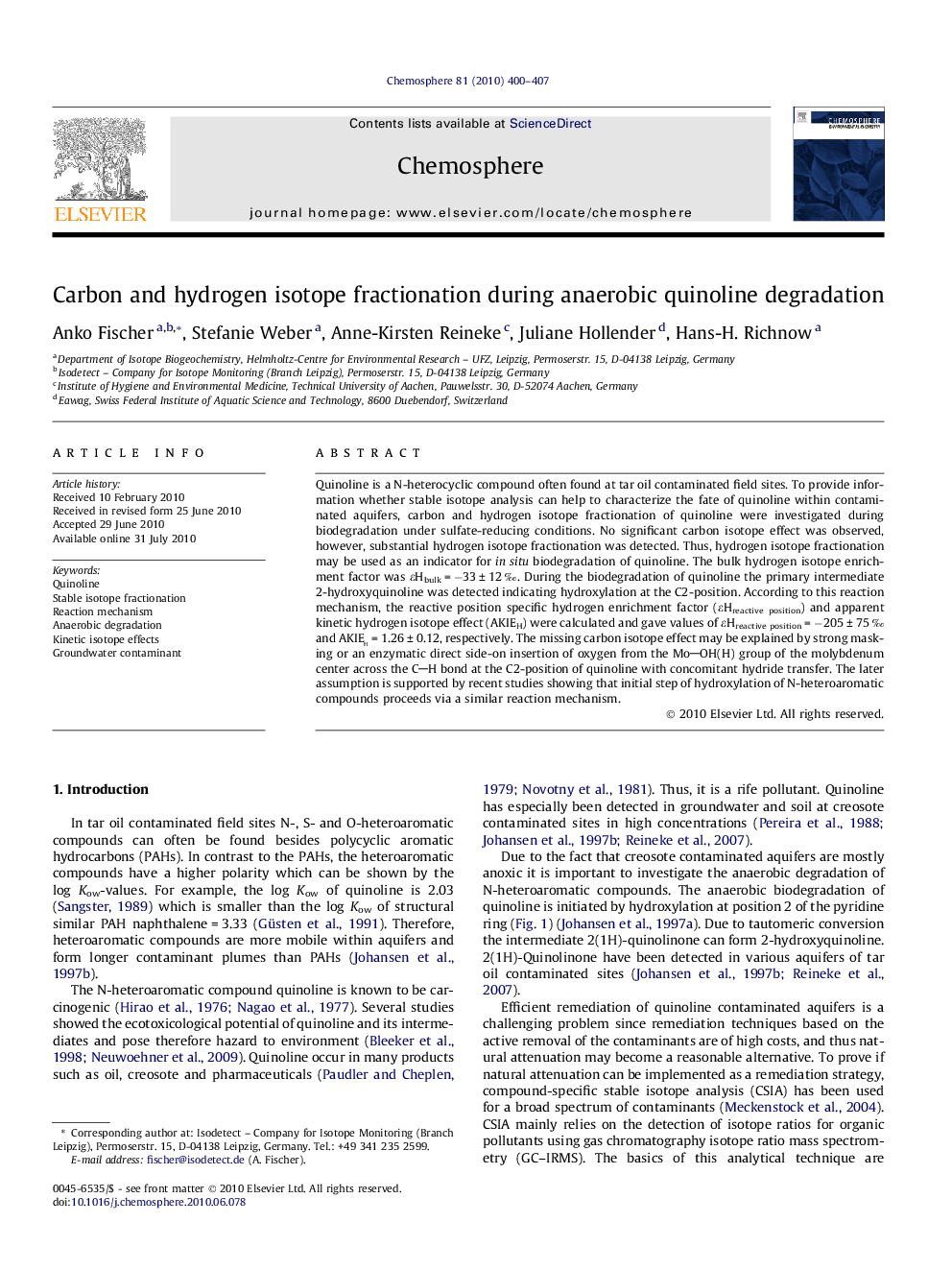| کد مقاله | کد نشریه | سال انتشار | مقاله انگلیسی | نسخه تمام متن |
|---|---|---|---|---|
| 4411328 | 1307589 | 2010 | 8 صفحه PDF | دانلود رایگان |

Quinoline is a N-heterocyclic compound often found at tar oil contaminated field sites. To provide information whether stable isotope analysis can help to characterize the fate of quinoline within contaminated aquifers, carbon and hydrogen isotope fractionation of quinoline were investigated during biodegradation under sulfate-reducing conditions. No significant carbon isotope effect was observed, however, substantial hydrogen isotope fractionation was detected. Thus, hydrogen isotope fractionation may be used as an indicator for in situ biodegradation of quinoline. The bulk hydrogen isotope enrichment factor was εHbulk = −33 ± 12 ‰. During the biodegradation of quinoline the primary intermediate 2-hydroxyquinoline was detected indicating hydroxylation at the C2-position. According to this reaction mechanism, the reactive position specific hydrogen enrichment factor (εHreactive position) and apparent kinetic hydrogen isotope effect (AKIEH) were calculated and gave values of εHreactive position = −205 ± 75 ‰ and AKIEH = 1.26 ± 0.12, respectively. The missing carbon isotope effect may be explained by strong masking or an enzymatic direct side-on insertion of oxygen from the MoOH(H) group of the molybdenum center across the CH bond at the C2-position of quinoline with concomitant hydride transfer. The later assumption is supported by recent studies showing that initial step of hydroxylation of N-heteroaromatic compounds proceeds via a similar reaction mechanism.
Journal: Chemosphere - Volume 81, Issue 3, September 2010, Pages 400–407